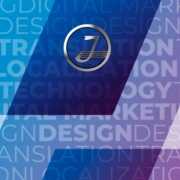Translation within the E-Learning Industries Multimedia
The times of learning in a classroom and teaching new employees the ropes face-to-face has long passed, as the learning industries have changed for the better and in a more efficient manner, allowing more and more people to understand industries digitally, in their native languages. Whereas before you’d have a training manual for the equipment in English, and that was it – now, thousands of companies around the world are growing, and offering new, improved ways of learning the job electronically. E-learning allows for students and employees to access platforms virtually, anywhere around the world, where they can learn vital information wherever they please, as opposed to during orientation day on the first day of the job. To most people in this modern-day economy, we take e-learning for granted, but it wasn’t many years ago when these services were just starting up, and I’ll use this article to tell you all about the methods, history, importance and future of the learning industry.
Let’s start with a statistic, in reference to IBM Report, companies and teams that used methods of e-learning in their services, be that for training or distribution, saved on average, $70,000 a year. Is this kind of figure surprising? No, in fact, I would have assumed it to be much higher, because the entire point of the learning industry is to streamline, to make every single part of the service more efficient, more accessible globally. When a company grows large enough, they will of course see a need to expand, be that around the country, or even across the world. When this happens, we see the distinct challenge of localization, and we see translation within the e-learning industries a vital way in which these challenges can be overcome with ease.
The Ever-Evolving Training Industry
I mentioned what the learning industry used to be, in that it wasn’t really an industry at all, you’d have learning institutions such as schools, which are of course mandatory, and you’d have whatever kind of learning systems put in place by your employer, if needed. As aforementioned, with growth and the fast expansion of the world’s economy, we see a much stronger need for a newer kind of learning, one easily accessed on a global scale, and one that is easily understood by all. That is of course where localization comes into the picture; a service that has changed nearly everything about the idea of learning, and made it what it is today. From localization, we can see all kinds of helpful additions to the learning industry, such as: image and video integration, voice acting, script writing, software and application development, and distribution of digital resources around the world.
In regard to specifics, some may wonder why localization is necessary in the training industry, but let’s look at the concept as if a business had left its native country, and was instead in a region where their language was not widely spoken. For a secondary perspective, we can also use that of anyone in the world simply trying to learn a new skill, or gain a qualification online. These are the circumstances in which localization thrives within the learning industry, by creating globally accessible services such as portals, applications and software, which cut out the hassle of communication between those who do not speak the language.
The Ways in Which Localization Fits into Training
Let’s get a bit more specific with that example, with e-learning, instead of having an instructor, or advisor on hand to train these staff members, you’re leaving it to a reliable, tested, automated service that completely avoids any issues of human miscommunication. Because of this, productivity is boosted, as now staff members can use a service that has been manufactured to work for their needs in any situation, the company is also saving money on training cost, no instructor, no equipment, just the software at hand. And, consider this, to us, English is a huge language, right? But that’s just not true, English only makes up 30% of the world’s native language, so by opening your training to a global audience, you’re increasing your reach of the world by 70%, just through the use of a virtual service.
When companies go through this localization process, they pave the way for paths that never could have existed, and they keep those paths maintained for the future to come. What they do is create a reliance, not on a human who can give in to the strain of multilingual communication, but on a software, that is designed to keep everyone on the same page, no matter the language, dialect or time-frame. This then produces a workforce who understand the company goal; communication becomes easy, because every single staff member has been briefed in their own native language, be that through video, imagery, or voice-overs.
But why? Why bother with it all? The answer is due to growth, laid back companies stay in their native region, and those willing to grow, evolve into new continents and languages. But to do this, you can’t keep the same protocols and regulations, you can’t even have ten variants of each. You must localize to the world, and not just by country for that matter. Being general and broad-termed in the localization industry is a no-go due to dialect, variation and differing cultures. Take China as an example, it’s nowhere near as simple as saying “localize this tutorial for China”, because in China alone, there are over 290 languages spoken. However, that’s the beauty of e-learning and companies like Janus Worldwide, with them it’s possible.
Localizing Correctly in Learning

Using these e-learning services is one thing, but creating them, for your company, or for other training purpose, is an entirely different matter. That’s where Janus Worldwide can help and are available to provide localization services in any step of production for any kind of learning service, whether it’s text, image, video or voice-based, as well as having experience in Moodle, Articulate and Adobe Captivate. But how do they get it right? What kinds of things do we need to look out for when creating this kind of service?
Firstly, you start with the team, they need to be not only multilingual, but also proficient in their field, whatever industry that may be. Janus Worldwide makes sure that whichever of our many qualified linguists you’re working with, they’ll be well versed in the specific field you need help in. This way, terminology, abbreviations, common modes of speech and language are conveyed perfectly, in every single language you need. These types of details are specific to more than just industry though, it’s also important to take into account company beliefs, slogans and the overall tone that you want to convey to different cultures and regions. This way, when it does come time to learn, each individual has a clear picture of what the company is doing, and how you want them to help.
While seemingly trivial to us in comparison to finished products, there are also minute details to consider, such as font size and style, color combinations, and symbolism. What is acceptable in English speaking countries, may be absolutely offensive in another, or the color scheme used could represent/be related to an entirely different idea. Another detail to consider is dialect, in both text and especially audio based learning, we must make sure that the language we used is fine tuned to mean, say, and convey the message we want to our staff members. Luckily, this is where testing comes in handy, as we can look into what is working, what fits, and what can be rid of. If the font doesn’t fit, or the colors don’t match the tone of the piece, it can be easily changed by Janus before the deadline.
What’s Next for the Training Industries?

This is a question people ponder for every industry, and it’s generally a question that’s unpredictable. However, growth is a viable answer, the next step for any industry is always growth, and with that of the learning industry, the direction of growth is obvious. We need more – more languages, more dialects, more fields of practice, more qualifications and skills to choose from for the global users. This is an industry that has allowed people all around the world to work locally, through the power of digital media. It requires no tutor, no hardware besides that of conveyance, no high fees and no facility to run, you simply log in and are able to gain knowledge on whatever subject you feel like.
How do you possibly expand from there? In a system that’s already so efficient and helpful, where can we go from here? In my opinion, you keep going in the direction you started, as aforementioned, you continue to enlarge your audience, and the amount of people who can access your services. Ultimately increasing the amounts of languages and dialects available, the regions it is accessible to, and the ease of access for all involved.





